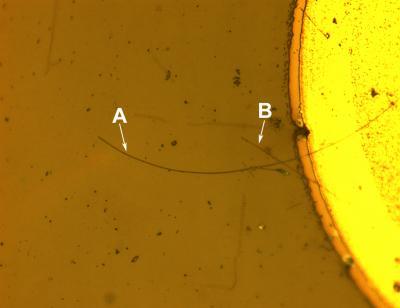Just a few years ago, the average computer user’s documents, applications and even photos seemed to rattle around a 120 GB disk drive. Today’s multimedia-intensive user can exhaust that capacity in no time and engineers expect to max out conventional magnetic storage techniques by about 2010.
At that point, they’ll be looking for nanotechnology to step up.
 Cross-sectional diagram of a flat lamp structure based on aluminum foil encapsulated in saphire and a thin glass coating.
Cross-sectional diagram of a flat lamp structure based on aluminum foil encapsulated in saphire and a thin glass coating.
 Micrograph of a complete nanowire LED with the end contact.
Micrograph of a complete nanowire LED with the end contact.